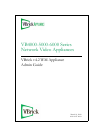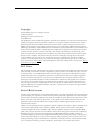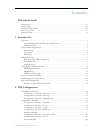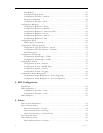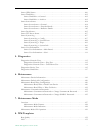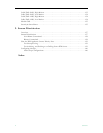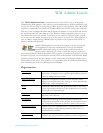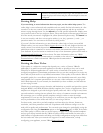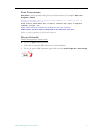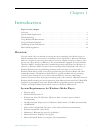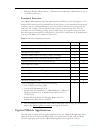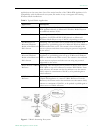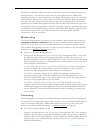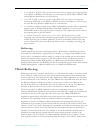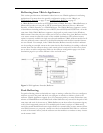
VBrick WM Appliance Admin Guide vii
WM Admin Guide
This VBrick WM Admin Guide is written for anyone who will be using or configuring a
VB6000 Series WM appliance. This includes system administrators, network technicians, and
anyone who will be using or configuring a VBrick network video appliance. The VBrick WM
Appliance is compatible with Microsoft Windows Media and converts analog video and audio
from any source into digital Windows Media streams. It attaches to your network and delivers
the streaming video and audio directly to any Windows Media-compatible player or server.
The VBrick can deliver the streams via multicast to any number of players on the network
and it can serve the stream via unicast to up to 200 players or servers. The WM Appliance is
part of VBrick's award winning VB6000 series of products with a proven track record of
quality, reliability and flexibility.
VBrick's WM Appliance is an industrial strength, versatile, and reliable
video appliance for one-way communication over low and medium
bandwidth IP networks using the widely deployed Windows Media
format. The WM Appliance can be deployed in a variety of ways and integrates seamlessly
into existing Windows Media deployments. This powerful, yet inexpensive product can reach
thousands of people on your enterprise network, VPN, or the Internet. The Windows Media
appliance provides both Windows Media encoder functionality and Windows Media server
functionality for live video. A key benefit is its compatibility with the Windows Media Player,
thus eliminating the need for a desktop player installation.
Organization
Introduction provides an overview of the WM Appliance and typical VBrick
applications. It explains how to optimize performance and how
to deliver multiple bit rate streams.
WM Configuration
explains all configuration windows for the encoder. These
include encoder audio and video settings as well as passthrough,
SNMP traps, script management, etc.
Status
explains the status screens that provide information about the
system, the encoder, the server. It also explains how to view the
system and event logs and traps.
Diagnostics
explains how to run various diagnostic tests. These include ping,
traceroute, and loopback.
Maintenance
explains how to manage device information and reset all
configuration parameters to the defaults. It also explains how to
save configuration data and/or rewrite it back to the encoder.
Maintenance Mode
explains how to use a limited subset of the IWS interface to
manage appliance configuration parameters when there is a
firmware download failure.
WM Templates
shows each setting on the pre-configured audio and video
templates that are provided for common encoder configurations.



